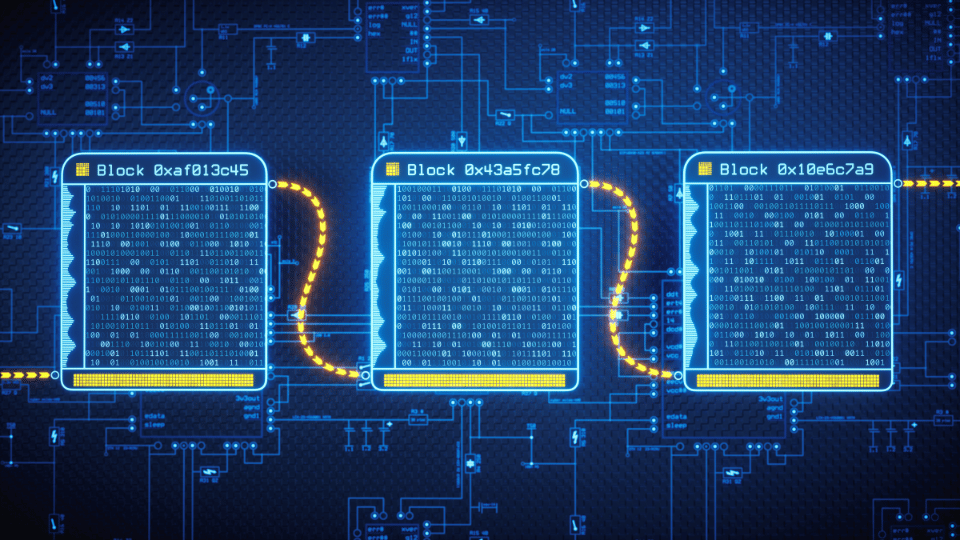In recent years, blockchain technology has emerged as a revolutionary force, reshaping the landscape of various industries and redefining how we perceive data security and transparency in the era of Industrial Revolution 4.0. Initially popularized by cryptocurrencies like Bitcoin, blockchain has transcended its original purpose, evolving into a versatile tool with applications that extend far beyond digital currencies.

In this article, we will simplify blockchain technology by exploring its definition, how it works, its benefits, real-world applications, and the debate around its security.
Blockchain is a decentralized, distributed digital ledger that records transactions across a network of computers. Unlike traditional databases, which are controlled by a central authority, blockchain operates on a peer-to-peer basis, allowing participants to verify and validate transactions independently.
At its core, a blockchain consists of a series of blocks, each containing a list of transactions. Each transaction is grouped into a block, which is then linked to the previous block, forming a chain of blocks; hence the name ‘blockchain.’

This technology is most commonly associated with cryptocurrencies, such as Bitcoin, but its applications extend far beyond digital currencies. Essentially, blockchain technology serves as a secure and transparent method for recording and sharing information, making it a revolutionary advancement in data management.

As mentioned previously, blockchain technology operates as a decentralized and distributed ledger system. The decentralized nature of blockchain means that no single entity has control over the entire network, reducing the risk of fraud and manipulation.
In blockchain technology, each transaction is recorded in a block, which is then linked to the previous block, forming a chronological chain of data. This structure ensures that once a block is added to the chain, it cannot be altered or deleted, providing a high level of data integrity.

The process begins when a transaction is initiated, and it is broadcasted to a network of nodes, which are computers that participate in the blockchain. These nodes validate the transaction using consensus algorithms, ensuring that all parties agree on the transaction’s legitimacy before it is added to the blockchain.
Once validated, the transaction is grouped with other transactions into a new block. This block is then added to the existing blockchain, and the updated ledger is distributed across all nodes in the network.
Each node maintains a copy of the entire blockchain, which enhances transparency and security. Additionally, the use of cryptographic techniques ensures that transactions are secure and that the identities of the participants remain confidential, further bolstering the trustworthiness of the system.
Blockchain technology is often lauded for its robust security features, which stem from its decentralized nature and the use of cryptographic principles. Each transaction recorded on a blockchain is secured through complex mathematical algorithms, making it extremely difficult for malicious actors to alter or manipulate the data. This inherent security is further enhanced by the consensus mechanisms employed by various blockchain networks, which require agreement among participants before any changes can be made. As a result, blockchains are generally considered to be secure and reliable for storing sensitive information, including digital asset ownership and transaction records.
However, it is important to note that while blockchains themselves are designed to be secure, they are not completely impervious to attacks. Security vulnerabilities can arise from other components of the cryptocurrency ecosystem, such as wallets and exchanges, where users may inadvertently expose their assets to risks.
Additionally, the security level of a blockchain technology is determined by the code and protocols that govern it, meaning that poorly designed or outdated systems can be susceptible to breaches. Therefore, while blockchain technology offers a strong foundation for security, users must remain vigilant and adopt best practices to safeguard their assets effectively.
In the financial industry, blockchain is primarily used for secure and swift money transfers, enabling peer-to-peer transactions without the need for intermediaries. This not only reduces transaction costs but also minimizes the time taken for cross-border payments, making it a preferred choice for remittances and international trade.
Furthermore, in supply chain management, blockchain enhances traceability, allowing companies to track the movement of goods from origin to destination, ensuring authenticity and reducing fraud.
Other notable applications include identity verification in travel and cybersecurity, where blockchain secures access to personal information, and voting systems, which can benefit from increased transparency and reduced fraud.
Beyond finance and supply chain, blockchain is making significant strides in healthcare, where it is utilized for secure patient data management and sharing. By creating a decentralized and immutable record of patient information, healthcare providers can access accurate data while maintaining patient privacy. Furthermore, the technology is being explored in the realm of digital identity verification, where it offers a tamper-proof infrastructure for managing identities in a secure manner.
Other notable applications include the media industry, where blockchain is used for copyright protection and content distribution, and the burgeoning NFT marketplace, which leverages blockchain to authenticate and trade digital assets. As industries continue to explore the potential of blockchain, its applications are expected to expand even further, driving innovation and efficiency across various domains.
One of the most notable advantages of blockchain technology is the increased trust it fosters among participants in a network. By providing a decentralized structure, blockchain eliminates the need for intermediaries, allowing transactions to be verified and recorded by all members. This transparency not only builds confidence but also enhances security and privacy, as data is less susceptible to tampering or unauthorized access. Furthermore, the traceability of data across the network improves accountability, making it easier to track transactions and identify discrepancies.
In addition to trust and security, blockchain technology can lead to substantial cost reductions. By streamlining processes and eliminating intermediaries, businesses can reduce operational costs and improve efficiency. The speed of transactions is also enhanced, as blockchain allows for real-time processing without the delays typically associated with traditional banking systems.
Moreover, the innovative nature of blockchain encourages the development of new applications and services, driving further advancements in various industries.
Blockchain technology marks a major advancement in how data is stored, shared, and secured. Its decentralized nature enhances transparency, trust, and reduces the risk of fraud, offering potential for transforming industries and streamlining traditional processes. As blockchain applications continue to expand, they promise greater efficiency and reliability across sectors.
However, challenges such as scalability and regulatory concerns must be addressed for its widespread adoption. A balanced approach that considers both the advantages and limitations of blockchain is essential. Collaboration among developers, businesses, and regulators will be key to overcoming these obstacles and unlocking blockchain’s full potential to create a more secure and efficient future.